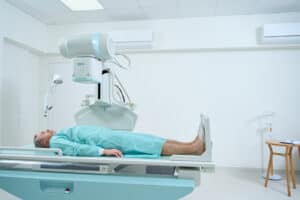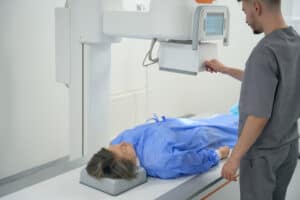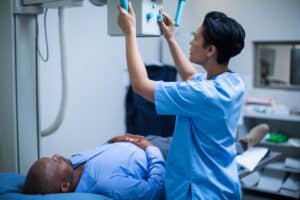Exploring Patient Shielding in Imaging: Why Lead Aprons are No Longer Recommended
Introduction
In the world of medical imaging, ensuring patient safety is vital. For many years, patient shielding was an essential aspect of imaging safety, and it was common practice to provide patients with a lead apron during imaging exams. However, the latest advancements in imaging technology have proven that the best way to keep patients safe is by not using these shields. This article reviews the new recommendations and the significant strides made in ensuring safety in medical imaging.
Patient Shielding & Its Origins
Back in the 1950s, when our understanding of the effects of radiation on the body was still limited, patient shielding became standard practice. The goal was to protect reproductive organs from potential radiation harm during imaging exams, leading to the widespread use of lead shields. However, it’s evident now that the safest way to capture X-ray images is without these shields.

Advancements in Imaging Technology
There is currently a shift away from using lead shields during imaging exams. This positive change is rooted in over seven decades of medical research. The latest technology advancements have indisputably shown the most effective way to ensure your safety during imaging exams is by foregoing lead shields, regardless of your age.
Advantages vs Limitations of Patient Shielding
Advantages of Patient Shielding:
- Shielding does not offer any advantages from a safety perspective.
- Shielding can offer a sense of reassurance to those concerned about radiation exposure.
Limitations of Patient Shielding:
- Shielding can interfere with the imaging process.
- It can potentially obscure critical areas of the body, leading to repeat exams.
- This can inadvertently lead to higher radiation exposure during an imaging exam.

Impact of Lead Shields on Imaging
Lead shields may obscure areas of the body during imaging exams and interfere with other features crucial for an accurate diagnosis. If this occurs, the exam might need to be repeated to ensure an accurate diagnosis. In some instances, lead shields can also interfere with the automated exposure systems, inadvertently leading to higher radiation exposure during an imaging exam. It is critical for patients to have informed discussions with technologists or physicians before opting for lead shielding.

Radiation Dose Reduction
Over the past seven decades, there has been a remarkable 95% reduction in radiation in medical imaging exams. State-of-the-art technology now allows for high-quality images with minimal radiation exposure. Modern imaging technology is equipped to control radiation doses precisely, ensuring only the necessary amounts are used.

Current Recommendations
Recent studies have prompted the evolution of national guidelines concerning patient shielding in medical imaging procedures. The latest recommendations advise against the routine use of patient shielding, particularly lead aprons. Pregnant patients are also advised against shielding, as radiation exposure to the fetus is typically minimal and poses no significant health risks to either the mother or the fetus.

Shielding for Healthcare Professionals
While patient shielding may be less common, adequate shielding for radiological technologists and other occupational workers remains crucial. These professionals are routinely exposed to X-ray technology, and minimizing their exposure levels is imperative for their safety.

Conclusion
As medical imaging progresses, it’s essential for both healthcare providers and patients to stay informed about the evolving recommendations regarding patient shielding. While shielding may offer psychological comfort to some patients, it’s crucial to weigh its potential benefits against evolving standards of care in radiology.
Resources
- National Council on Radiation Protection – No. 13: Recommendations for Ending Routine Gonadal Shielding During Pelvic and Abdominal Radiography.
- The American Association of Physicists in Medicine
- American Board of Radiology
- American College of Radiology: hereand here
- The American Society of Radiologic Technologists







